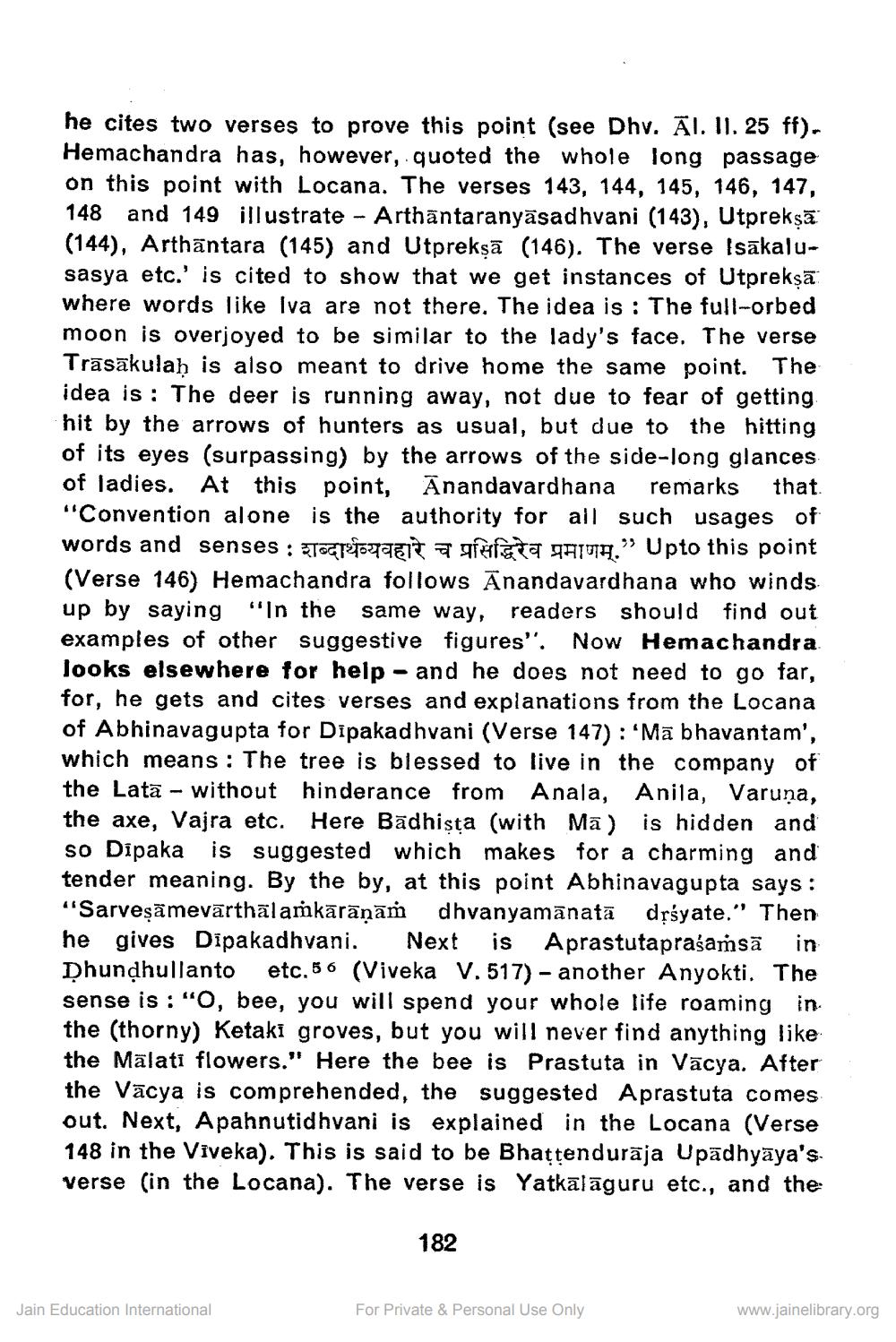________________
he cites two verses to prove this point (see Dhv. Al. II. 25 ff). Hemachandra has, however, quoted the whole long passage on this point with Locana. The verses 143, 144, 145, 146, 147, 148 and 149 illustrate - Arthāntaranyāsadhvani (143), Utpreksā (144), Arthāntara (145) and Utprekşā (146). The verse Isākalusasya etc.' is cited to show that we get instances of Utpreksā where words like Iva are not there. The idea is : The full-orbed moon is overjoyed to be similar to the lady's face. The verse Trāsākulah is also meant to drive home the same point. The idea is : The deer is running away, not due to fear of getting hit by the arrows of hunters as usual, but due to the hitting of its eyes (surpassing) by the arrows of the side-long glances of ladies. At this point. Anandavardhana remarks that "Convention alone is the authority for all such usages of words and senses : शब्दार्थव्यवहारे च प्रसिद्धिरेव प्रमाणम्." Upto this point (Verse 146) Hemachandra follows Ānandavardhana who winds up by saying "In the same way, readers should find out examples of other suggestive figures". Now Hemachandra looks elsewhere for help - and he does not need to go far, for, he gets and cites verses and explanations from the Locana of Abhinavagupta for Dipakadhvani (Verse 147): 'Mā bhavantam', which means : The tree is blessed to live in the company of the Latā - without hinderance from Anala, Anila, Varuna, the axe, Vajra etc. Here Bādhista (with Mā) is hidden and so Dipaka is suggested which makes for a charming and tender meaning. By the by, at this point Abhinavagupta says: "Sarveşāmevārthālamkārāņāṁ dhvanyamānatā dřśyate." Then he gives Dipakadhvani. Next is Aprastutaprašaṁsā in Dhundhullanto etc. 56 (Viveka V. 517) - another Anyokti. The sense is : "O, bee, you will spend your whole life roaming in the (thorny) Ketaki groves, but you will never find anything like the Mälati flowers." Here the bee is Prastuta in Vācya. After the Vācya is comprehended, the suggested Aprastuta comes out. Next, Apahnutidhvani is explained in the Locana (Verse 148 in the Viveka). This is said to be Bhattendurāja Upadhyāya's. verse (in the Locana). The verse is Yatkālāguru etc., and the
182
Jain Education International
For Private & Personal Use Only
www.jainelibrary.org




